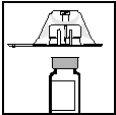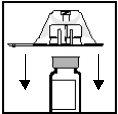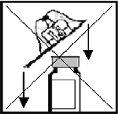
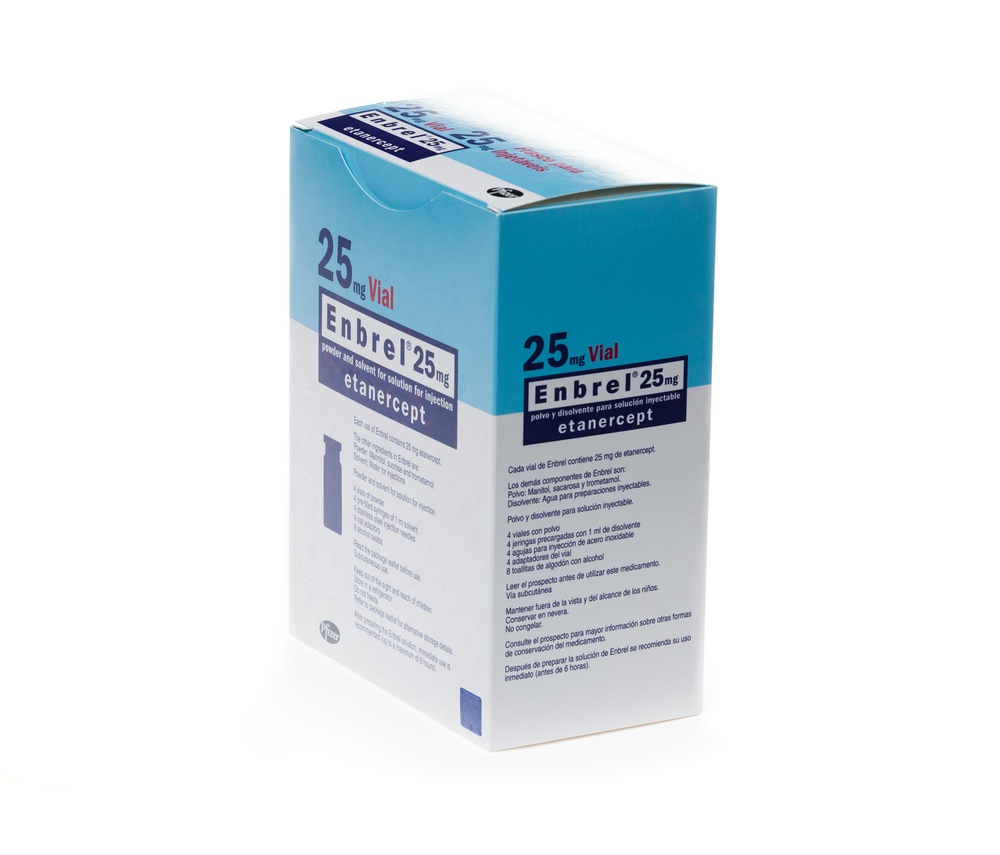
ЭНБРЕЛЬ 25 мг ПОРОШОК И РАСТВОРИТЕЛЬ ДЛЯ ПРИГОТОВЛЕНИЯ РАСТВОРА ДЛЯ ИНЪЕКЦИЙ


Инструкция по применению ЭНБРЕЛЬ 25 мг ПОРОШОК И РАСТВОРИТЕЛЬ ДЛЯ ПРИГОТОВЛЕНИЯ РАСТВОРА ДЛЯ ИНЪЕКЦИЙ
Введение
Прошпект: информация для пользователя
Энбрел 25 мг порошок и растворитель для раствора для инъекций
этанерцепт
Прочитайте внимательно весь прошпект перед началом использования этого лекарства, поскольку он содержит важную информацию для вас.
|
Содержание прошпекта
Информация, представленная в этом прошпекте, организована в следующих 7 разделах:
- Что такое Энбрел и для чего он используется
- Что необходимо знать перед началом использования Энбрела
- Как использовать Энбрел
- Возможные побочные эффекты
- Хранение Энбрела
- Содержание упаковки и дополнительная информация
- Инструкции по применению
1. Что такое Энбрел и для чего он используется
Энбрел - это лекарство, изготовленное из двух человеческих белков. Он блокирует активность другого белка, присутствующего в организме, который производит воспаление. Энбрел действует, уменьшая воспаление, связанное с определенными заболеваниями.
Энбрел может быть использован для лечения взрослых в возрасте 18 лет и старше для лечения умеренной или тяжелой ревматоидной артрита, псориатической артрита, тяжелой аксиальной спондилоартрита, включая анкилозирующий спондилит и псориаза, умеренной или тяжелой степени, обычно в зависимости от каждого случая, когда другие методы лечения не были достаточно эффективными или не подходят для вас.
При лечении ревматоидной артрита Энбрел обычно используется в комбинации с метотрексатом, хотя также может быть использован как единственное лекарство, в случае, когда лечение метотрексатом не подходит для вас. Энбрел может замедлить повреждение, вызванное ревматоидной артритом, в ваших суставах и улучшить вашу способность выполнять повседневные действия, как при использовании в одиночку, так и в комбинации с метотрексатом.
В случае пациентов с псориатической артритом с множественным поражением суставов Энбрел может улучшить вашу способность выполнять повседневные действия. В случае пациентов с множественными симметричными, отечными или болезненными суставами (например, в руках, запястьях и ногах) Энбрел может замедлить прогрессию структурного повреждения этих суставов, вызванного заболеванием.
Энбрел также показан для лечения детей и подростков с следующими заболеваниями:
- Для следующих типов ювенильного идиопатического артрита, когда лечение метотрексатом не было эффективным или не подходит для них:
- Полиартрит (с положительным или отрицательным ревматоидным фактором) и расширенная олигоартрит у пациентов в возрасте от 2 лет.
- Псориатический артрит у пациентов в возрасте от 12 лет.
- Для артрита, связанного с энтезитом, у пациентов в возрасте от 12 лет, для которых использование других, более часто используемых методов лечения, не было эффективным или не подходит для них.
- Тяжелый псориаз у пациентов в возрасте от 6 лет, которые имели неадекватный ответ на фототерапию или другие системные терапии.
2. Что необходимо знать перед началом использования Энбрела
Не используйте Энбрел
- если вы или ребенок, находящийся на вашем попечении, аллергичны к этанерцепту или любому другому компоненту Энбрела (указанному в разделе 6). Если вы или ребенок испытываете аллергические реакции, такие как сдавление груди, одышка, головокружение или сыпь, не вводите больше Энбрела и немедленно свяжитесь с вашим врачом.
- если вы или ребенок страдаете или имеете риск развития тяжелой инфекции крови, называемой сепсисом. Если вы не уверены, проконсультируйтесь с вашим врачом.
- если вы или ребенок страдаете какой-либо инфекцией. Если вы не уверены, проконсультируйтесь с вашим врачом.
Предостережения и меры предосторожности
Проконсультируйтесь с вашим врачом перед началом использования Энбрела.
- Аллергические реакции: Если вы или ребенок испытываете аллергические реакции, такие как сдавление груди, одышка, головокружение или сыпь, не вводите больше Энбрела и немедленно свяжитесь с вашим врачом.
- Латекс: Колпачок шприца изготовлен из латекса (сухой натуральный каучук). Свяжитесь с вашим врачом перед использованием Энбрела, если шприц будет обращаться или если Энбрел будет вводиться кому-либо с известной или возможной аллергией на латекс.
- Инфекции/хирургия: Если вы или ребенок развиваете новую инфекцию или собираетесь пройти крупную хирургическую операцию, ваш врач может захотеть контролировать лечение Энбрелом.
- Инфекции/диабет: Сообщите вашему врачу, если вы или ребенок страдаете от повторяющихся инфекций или если у вас есть диабет или другие расстройства, которые увеличивают риск инфекции.
- Инфекции/мониторинг: Сообщите вашему врачу о любой недавней поездке за пределы европейского региона. Если вы или ребенок испытываете симптомы инфекции, такие как лихорадка, озноб или кашель, немедленно сообщите об этом вашему врачу. Ваш врач должен решить, продолжать ли мониторинг вас или ребенка на предмет инфекций после прекращения лечения Энбрелом.
- Туберкулез: Поскольку были зарегистрированы случаи туберкулеза у пациентов, леченных Энбрелом, ваш врач осмотрит признаки и симптомы туберкулеза перед началом лечения Энбрелом. Это может включать тщательный анализ вашей медицинской истории, рентгенографию грудной клетки и тест на туберкулез. Проведение этих тестов должно быть записано в Карточке информации пациента. Очень важно, чтобы вы сообщили вашему врачу, если вы или ребенок имели туберкулез или были в прямом контакте с кем-либо, кто имел туберкулез. Если симптомы туберкулеза (такие как постоянный кашель, потеря веса, апатия, умеренная лихорадка) или любая другая инфекция появляются во время или после лечения, немедленно сообщите об этом вашему врачу.
- Гепатит Б: Сообщите вашему врачу, если вы или ребенок имели гепатит Б. Ваш врач должен провести тест на гепатит Б перед началом лечения Энбрелом. Лечение Энбрелом может реактивировать гепатит Б у пациентов, которые ранее были инфицированы вирусом гепатита Б. Если это происходит, необходимо прекратить использование Энбрела.
- Гепатит С: Сообщите вашему врачу, если вы или ребенок страдаете гепатитом С. Ваш врач может захотеть контролировать лечение Энбрелом в случае ухудшения инфекции.
- Расстройства крови: Немедленно сообщите вашему врачу, если вы или ребенок испытываете симптомы, такие как постоянная лихорадка, боль в горле, синяки, кровотечение или бледность. Эти симптомы могут указывать на наличие серьезной проблемы с кровью, которая требует прекращения лечения Энбрелом.
- Расстройства нервной системы и зрения: Сообщите вашему врачу, если вы или ребенок страдаете рассеянным склерозом, невритом зрительного нерва (воспалением зрительных нервов) или трансверсельным миелитом (воспалением спинного мозга). Ваш врач решит, является ли Энбрел подходящим методом лечения.
- Сердечная недостаточность: Сообщите вашему врачу, если вы или ребенок страдаете сердечной недостаточностью, поскольку Энбрел должен быть использован с осторожностью в этих обстоятельствах.
- Рак: Сообщите вашему врачу, если вы имели лимфому (тип рака крови) или любой другой рак до того, как Энбрел будет введен.
Пациенты с тяжелой ревматоидной артритом, которые имели это заболевание в течение длительного времени, могут иметь более высокий риск развития лимфомы, чем в среднем.
Дети и взрослые, принимающие Энбрел, могут иметь повышенный риск развития лимфомы или других видов рака.
Некоторые подростки и дети, получавшие Энбрел или другие лекарства, действующие подобно Энбрелу, развили рак, включая необычные виды, которые иногда привели к смерти.
Некоторые пациенты, получавшие Энбрел, развили рак кожи. Сообщите вашему врачу, если вы или ребенок испытываете любые изменения в коже или росты на коже.
- Ветряная оспа: Сообщите вашему врачу, если вы или ребенок были подвержены ветряной оспе во время использования Энбрела. Ваш врач определит, является ли профилактическое лечение ветряной оспы подходящим.
- Алкоголизм: Энбрел не должен быть использован для лечения гепатита, связанного с алкоголизмом. Пожалуйста, сообщите вашему врачу, если вы или ребенок, находящийся на вашем попечении, имели историю алкоголизма.
- Гранулематоз Вегенера: Энбрел не рекомендуется для лечения гранулематоза Вегенера, редкого воспалительного заболевания. Если вы или ребенок, находящийся на вашем попечении, страдаете гранулематозом Вегенера, обсудите это с вашим врачом.
- Противодиабетические лекарства: Сообщите вашему врачу, если вы или ребенок страдаете диабетом или принимаете лекарства для лечения диабета. Ваш врач может решить, что вам или ребенку необходимо меньше противодиабетических лекарств во время приема Энбрела.
Дети и подростки
Вакцинация: Если это возможно, дети должны быть привиты против всех необходимых заболеваний перед началом использования Энбрела. Некоторые вакцины, такие как пероральная вакцина против полиомиелита, не должны быть введены во время использования Энбрела. Проконсультируйтесь с вашим врачом перед использованием любой вакцины.
Обычно Энбрел не должен быть использован у детей младше 2 лет с полиартритом или олигоартритом, у детей младше 12 лет с артритом, связанным с энтезитом, или псориатическим артритом, и у детей младше 6 лет с псориазом.
Другие лекарства и Энбрел
Сообщите вашему врачу или фармацевту, если вы или ребенок принимаете, недавно принимали или могут принимать любое другое лекарство (включая анакинру, абатацепт или сульфасалазин), даже если оно не было назначено вашим врачом. Вы или ребенок не должны использовать Энбрел вместе с лекарствами, содержащими активные вещества анакинра или абатацепт.
Беременность и лактация
Энбрел должен быть использован во время беременности только в случае явной необходимости. Проконсультируйтесь с вашим врачом, если вы беременны, думаете, что можете быть беременной или планируете стать беременной.
Если вы получали Энбрел во время беременности, ваш ребенок может иметь более высокий риск развития инфекции. Кроме того, в одном исследовании было обнаружено больше врожденных дефектов, когда мать получала Энбрел во время беременности, по сравнению с матерями, которые не получали Энбрел или другие подобные лекарства (антагонисты TNF), но не было выявлено никакого закономерности в типах врожденных дефектов. Другое исследование не обнаружило повышенного риска врожденных дефектов, когда мать получала Энбрел во время беременности. Ваш врач поможет вам решить, превышают ли преимущества лечения потенциальный риск для вашего ребенка.
Проконсультируйтесь с вашим врачом, если вы хотите кормить грудью во время лечения Энбрелом. Важно, чтобы вы сообщили педиатру и другим медицинским работникам об использовании Энбрела во время беременности и лактации до того, как ваш ребенок получит любую вакцину.
Вождение и использование машин
Не ожидается, что использование Энбрела повлияет на вашу способность управлять транспортными средствами и работать с машинами.
3. Как использовать Энбрел
Следуйте точно инструкциям по введению этого лекарства, указанным вашим врачом. В случае сомнений проконсультируйтесь с вашим врачом или фармацевтом.
Если вы считаете, что действие Энбрела слишком сильное или слишком слабое, сообщите об этом вашему врачу или фармацевту.
Дозировка для взрослых пациентов(в возрасте 18 лет и старше)
Ревматоидный артрит, псориатический артрит и аксиальный спондилоартрит, включая анкилозирующий спондилит
Обычная доза составляет 25 мг, вводимая дважды в неделю или 50 мг, вводимая один раз в неделю, в виде подкожной инъекции. Однако ваш врач может определить альтернативную частоту введения Энбрела.
Псориаз в виде бляшек
Обычная доза составляет 25 мг, вводимая дважды в неделю или 50 мг, вводимая один раз в неделю.
Альтернативно, могут быть введены 50 мг дважды в неделю в течение максимум 12 недель, за которыми следует 25 мг, вводимая дважды в неделю или 50 мг, вводимая один раз в неделю.
Ваш врач решит, как долго вы должны принимать Энбрел и нужна ли повторная терапия в зависимости от вашего ответа. Если Энбрел не оказывает влияния на ваше заболевание после 12 недель, ваш врач может порекомендовать прекратить использование этого лекарства.
Использование у детей и подростков
Адекватная доза и частота дозирования зависят от веса и заболевания ребенка или подростка. Врач укажет, как подготовить и измерить адекватную дозу.
Для полиартрита или олигоартрита у пациентов в возрасте от 2 лет или артрита, связанного с энтезитом, или псориатического артрита у пациентов в возрасте от 12 лет обычная доза составляет 0,4 мг Энбрела на килограмм веса тела (до максимум 25 мг) дважды в неделю или 0,8 мг Энбрела на килограмм веса тела (до максимум 50 мг) один раз в неделю.
Для псориаза у пациентов в возрасте от 6 лет обычная доза составляет 0,8 мг Энбрела на килограмм веса тела (до максимум 50 мг) один раз в неделю. Если Энбрел не оказывает влияния на заболевание ребенка после 12 недель, ваш врач может порекомендовать прекратить использование этого лекарства.
Форма и способ введения
Энбрел вводится в виде подкожной инъекции.
Энбрел может быть введен с пищей или без нее.
Порошок должен быть растворен перед использованием. В разделе 7, "Инструкции по применению", содержатся подробные инструкции по подготовке и введению Энбрела.Раствор Энбрела не должен быть смешан с любым другим лекарством.
Чтобы помочь вам запомнить, может быть полезно записать в дневнике, в какие дни недели вам необходимо использовать Энбрел.
Если вы примете больше Энбрела, чем необходимо
Если вы примете больше Энбрела, чем необходимо (либо введя слишком большую дозу за один раз, либо используя его слишком часто), вы должны немедленно проконсультироваться с врачом или фармацевтом. Всегда носите с собой упаковку лекарства, даже если она пуста.
Если вы забудете ввести Энбрел
Если вы забудете принять дозу, вы должны ввести ее как можно скорее, если только следующая доза не запланирована на следующий день, в этом случае вы должны пропустить забытую дозу. Затем продолжайте вводить лекарство в обычные дни. Если вы не вспомните до дня, когда должна быть введена следующая доза, не вводите двойную дозу (две дозы в один день), чтобы компенсировать забытую дозу.
Если вы прекратите лечение Энбрелом
Ваши симптомы могут вернуться после прекращения лечения.
Если у вас есть какие-либо другие вопросы о использовании этого лекарства, проконсультируйтесь с вашим врачом или фармацевтом.
4. Возможные побочные эффекты
Как и все лекарства, это лекарство может вызывать побочные эффекты, хотя не все люди испытывают их.
Аллергические реакции
Если вы заметите одну из следующих реакций, не вводите больше Энбрел. Сообщите своему врачу немедленно или обратитесь в отделение неотложной помощи ближайшей больницы.
- Трудности с глотанием или дыханием.
- Отек лица, горла, рук и ног.
- Чувство нервозности или тревоги, сердцебиение, внезапное покраснение кожи и/или чувство жара.
- Тяжелая сыпь, зуд или крапивница (промinentные красные или бледные пятна на коже, часто сопровождающиеся зудом).
Тяжелые аллергические реакции редки. Однако любой из вышеперечисленных симптомов может быть признаком аллергической реакции на Энбрел, поэтому вам необходимо немедленно обратиться за медицинской помощью.
Тяжелые побочные эффекты
Если вы заметите один из следующих эффектов, вам или ребенку может потребоваться неотложная медицинская помощь.
- Признаки тяжелых инфекций, такие как высокая температура, сопровождающаяся кашлем, одышкой, ознобом, слабостью или болезненной, чувствительной, красной и горячей кожей или суставами.
- Признаки расстройств крови, такие как кровотечение, гематомы или бледность.
- Признаки расстройств нервной системы, такие как онемение или покалывание, нарушения зрения, глазной боль или появление слабости в руке или ноге.
- Признаки сердечной недостаточности или ухудшения сердечной недостаточности, такие как усталость или одышка при физической активности, отеки лодыжек, чувство полноты в шее или животе, одышка ночью или кашель, синий цвет ногтей или вокруг губ.
- Признаки рака: рак может поражать любую часть тела, включая кожу и кровь, и возможные признаки зависят от типа и местоположения рака. Эти признаки могут включать потерю веса, температуру, отек (с или без боли), постоянный кашель, наличие уплотнений или утолщений на коже.
- Признаки автоиммунных реакций(при которых развиваются антитела, которые могут повредить нормальные ткани тела), такие как боль, зуд, слабость и дыхание, мыслительные, чувственные или зрительные нарушения.
- Признаки системной красной волчанки или системного lupus-подобного синдрома, такие как изменения веса, постоянная сыпь, температура, боль в мышцах или суставах или усталость.
- Признаки васкулитиса(воспаления кровеносных сосудов), такие как боль, температура, покраснение или жар кожи, или зуд.
Эти побочные эффекты редки или нечастые, но они являются тяжелыми состояниями (некоторые из них в редких случаях могут быть смертельными). Если эти признаки появляются, сообщите своему врачу немедленно или обратитесь в отделение неотложной помощи ближайшей больницы.
Ниже перечислены известные побочные эффекты Энбрел, сгруппированные по убывающей частоте:
- Очень частые(могут поражать более 1 из 10 человек):
Инфекции (включая простуду, синусит, бронхит, инфекции мочевыводящих путей и кожные инфекции); реакции в месте инъекции (включая кровотечение, гематомы, покраснение, зуд, боль и отек) (не возникают так часто после первого месяца лечения; некоторые пациенты развили реакцию в месте инъекции, которую они использовали недавно); и головная боль.
- Частые(могут поражать до 1 из 10 человек):
Аллергические реакции; температура; сыпь; зуд; образование аутоантител (антител, направленных против нормальных тканей).
- Нечастые(могут поражать до 1 из 100 человек):
Тяжелые инфекции (включая пневмонию, глубокие кожные инфекции, инфекции суставов, инфекцию крови и генерализованные инфекции); ухудшение сердечной недостаточности; низкий уровень красных кровяных телец, низкий уровень белых кровяных телец, низкий уровень нейтрофилов (типа белых кровяных телец); низкий уровень тромбоцитов; рак кожи (исключая меланому); локальный отек кожи (ангиоэдем); крапивница (промinentные красные или бледные пятна на коже, часто сопровождающиеся зудом); глазное воспаление, псориаз (новый или ухудшение); воспаление кровеносных сосудов, поражающее несколько органов; повышение уровня печеночных ферментов в анализах крови (у пациентов, которые также получают лечение метотрексатом, повышение уровня печеночных ферментов часто); боли в животе и диарея, потеря веса или кровь в кале (признаки проблем с кишечником).
- Редкие(могут поражать до 1 из 1 000 человек):
Тяжелые аллергические реакции (включая тяжелый локальный отек кожи и затрудненное дыхание); лимфома (тип рака крови); лейкоз (рак, поражающий кровь и костный мозг); меланома (тип рака кожи); сочетание низкого уровня красных кровяных телец, белых кровяных телец и тромбоцитов; расстройства нервной системы (с тяжелой мышечной слабостью и симптомами, подобными симптомам рассеянного склероза или воспаления глазных нервов или спинного мозга); туберкулез; сердечная недостаточность новой степени; судороги; системная красная волчанка или системный lupus-подобный синдром (симптомы могут включать постоянную сыпь, температуру, боль в суставах и усталость); кожная сыпь, которая может привести к тяжелому образованию пузырей и отслоению кожи; лихеноидные реакции (зудящая красно-фиолетовая сыпь и/или толстые белые линии на слизистых оболочках); аутоиммунный гепатит (воспаление печени, вызванное иммунной системой; у пациентов, которые также получают лечение метотрексатом, частота аутоиммунного гепатита нечастая); иммунологическое расстройство, которое может поражать легкие, кожу и лимфатические узлы (саркоидоз); воспаление или рубцевание легких (у пациентов, которые также получают лечение метотрексатом, частота воспаления или рубцевания легких нечастая); повреждение небольших фильтров внутри почек, приводящее к нарушению функции почек (гломерулонефрит).
- Очень редкие(могут поражать до 1 из 10 000 человек):
Недостаточность костного мозга для производства критически важных кровяных клеток.
- Частота не известна(не может быть оценена на основе доступных данных):
Карцинома Меркеля (тип рака кожи); саркома Капоши, редкий тип рака, связанный с вирусом человеческого герпеса 8. Саркома Капоши обычно проявляется как кожные поражения фиолетового цвета; чрезмерная активация белых кровяных телец, связанная с воспалением (синдром активации макрофагов); реактивация гепатита Б (инфекции печени); ухудшение заболевания, называемого дерматомиозитом (воспаление и слабость мышц, сопровождающиеся кожной сыпью).
Другие побочные эффекты у детей и подростков
Побочные эффекты, наблюдаемые у детей и подростков, а также их частота, подобны вышеописанным.
Сообщение о побочных эффектах
Если вы испытываете любой побочный эффект, проконсультируйтесь с вашим врачом или фармацевтом, даже если это возможные побочные эффекты, которые не перечислены в этом описании. Вы также можете сообщить о них напрямую через систему фармакологического надзора за лекарствами для человека: www.notificaRAM.es. Сообщая о побочных эффектах, вы можете способствовать предоставлению более полной информации о безопасности этого лекарства.
5. Хранение Энбрел
Храните это лекарство в недоступном для детей месте.
Не используйте это лекарство после даты истечения срока годности, указанной на упаковке и этикетке после "EXP". Дата истечения срока годности - последний день месяца, указанного.
Храните в холодильнике (2 °C - 8 °C). Не замораживайте.
До приготовления раствора Энбрел можно хранить вне холодильника при максимальной температуре 25 °C в течение одного периода до 4 недель; после чего лекарство не может быть охлаждено снова. Энбрел следует утилизировать, если он не был использован в течение 4 недель после извлечения из холодильника. Рекомендуется, чтобы вы записали дату, когда Энбрел был извлечен из холодильника, и дату, с которой Энбрел должен быть утилизирован (не позднее 4 недель после извлечения упаковки из холодильника).
После приготовления раствора Энбрел рекомендуется немедленный его использование. Однако раствор можно использовать в течение 6 часов после восстановления при хранении при температурах не выше 25 °C.
Не используйте это лекарство, если вы заметите, что раствор не прозрачный или содержит частицы. Раствор должен быть прозрачным, бесцветным или светло-желтым, без комков, чешуек или частиц.
Утилизируйте подходящим образом любой неиспользованный раствор Энбрел в течение 6 часов.
Лекарства не должны быть выброшены в канализацию или мусор. Спросите вашего фармацевта, как утилизировать упаковку и лекарства, которые вам больше не нужны. Таким образом, вы поможете защитить окружающую среду.
6. Содержимое упаковки и дополнительная информация
Состав Энбреля
Активным веществом Энбреля является этанерцепт. Каждый флакон Энбреля 25 мг содержит 25 мг этанерцепта.
Другие компоненты:
Порошок: маннитол (Е421), сахароза и трометамол
Растворитель: вода для инъекций
Внешний вид продукта и содержимое упаковки
Энбрел 25 мг выпускается в виде белого порошка и растворителя для инъекционной раствора (порошок для инъекций). Каждая упаковка содержит 4, 8 или 24 флакона для однократного использования, 4, 8 или 24 предварительно заполненные шприца с водой для инъекций, 4, 8 или 24 иглы, 4, 8 или 24 адаптера для флакона и 8, 16 или 48 ватных шариков с алкоголем. Возможно, что будут продаваться только некоторые размеры упаковок.
Владелец разрешения на маркетинг: Pfizer Europe MA EEIG Бульвар де ла Плен 17 1050 Брюссель Бельгия | |
Производитель: Pfizer Manufacturing Belgium NV Рийксвег 12 2870 Пурс-Синт-Амандс Бельгия |
Вы можете получить больше информации о этом лекарстве, обратившись к местному представителю владельца разрешения на маркетинг:
Испания
Pfizer, S.L.
Телефон: +34 91 490 99 00
Дата последнего пересмотра этого листка-вкладыша:
Подробная информация о этом лекарстве доступна на сайте Европейского агентства по лекарственным средствам: http://www.ema.europa.eu.
- Инструкции по применению
Эта секция разделена на следующие подразделы:
- Введение
- Подготовка к инъекции
- Подготовка дозы Энбреля для инъекции
- Добавление растворителя
- Извлечение раствора Энбреля из флакона
- Установка иглы в шприце
- Выбор места инъекции
- Подготовка места инъекции и введение раствора Энбреля
- Утилизация материалов
- Введение
Следующие инструкции объясняют, как подготовить и ввести Энбрел. Читайте внимательно инструкции и следуйте им шаг за шагом. Ваш врач или медсестра научат вас технике самоинъекции или введения инъекции ребенку. Не пытайтесь вводить инъекцию, пока не будете уверены, что понимаете, как подготовить инъекцию и ввести ее.
Эта инъекция не должна смешиваться с другими лекарствами.
- Подготовка к инъекции
- Вымойте руки тщательно.
- Выберите хорошее освещение и ровную рабочую поверхность.
- Поддон должен содержать следующие элементы. (Если нет, не используйте его и проконсультируйтесь с вашим фармацевтом). Используйте только указанные элементы. НЕиспользуйте никакие другие шприцы.
1 флакон Энбреля
1 предварительно заполненный шприц, содержащий прозрачный бесцветный растворитель (воду для инъекций)
1 игла
1 адаптер для флакона
2 ватных шарика с алкоголем
- Проверьте срок годности на этикетках флакона и шприца. Не используйте их после месяца и года, указанных на них.
- Подготовка дозы Энбреля для инъекции
- Выньте содержимое поддона.
- Снимите пластиковую крышку с флакона Энбреля (см. Фигуру 1). НЕснимайте серую пробку или алюминиевую крышку, окружающую верхнюю часть флакона.
Фигура 1
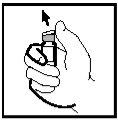
- Используйте новый ватный шарик с алкоголем, чтобы очистить пробку флакона Энбреля. После очистки не трогайте пробку руками и не допускайте, чтобы она соприкасалась с любой поверхностью.
- Поместите флакон в вертикальное положение и на ровную поверхность.
- Снимите бумагу, покрывающую упаковку адаптера для флакона.
- Держа его еще в пластиковой упаковке, поместите адаптер для флакона на верхнюю часть флакона Энбреля, так чтобы игла адаптера была центрирована внутри круга, появляющегося на верхней части пробки флакона (Фигура 2).
- Держите флакон крепко одной рукой на ровной поверхности. Другой рукой надавите сильно на упаковку адаптера ПРЯМОдо тех пор, пока не почувствуете, что игла адаптера проникает в пробку флакона и ПОКА НЕ ПОЧУВСТВУЕТЕ И НЕ УСЛЫШИТЕ, ЧТО КРАЙ АДАПТЕРА ЗАХВАТЫВАЕТСЯНА СВОЕМ МЕСТЕ(см. Фигуру 3). НЕнадавите на адаптер под углом (см. Фигуру 4). Важно, чтобы игла адаптера для флакона полностью проникла в пробку флакона.
Фигура 2 | Фигура 3 | Фигура 4 |
|
|
|
ПРАВИЛЬНО | НЕПРАВИЛЬНО |
- Держа флакон в одной руке, снимите упаковку адаптера для флакона (см. Фигуру 5).
Фигура 5
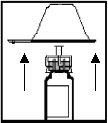
- Снимите защитный колпачок с конца шприца, разломав белую крышку вдоль перфорации. Это делается путем удержания кольца белой крышки в одной руке, а другой рукой удерживая конец белой крышки и сгибая его вверх и вниз до тех пор, пока он не разломится (см. Фигуру 6). НЕснимайте белое кольцо, которое остается прикрепленным к шприцу.
Фигура 6
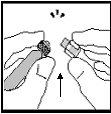
- Не используйте шприц, если эта перфорация уже разломана. Начните заново с другой упаковкой дозы.
- Держа стеклянную часть шприца (а не белое кольцо) в одной руке и адаптер для флакона (а не флакон) в другой руке, подключите шприц к адаптеру для флакона, вставив конец в отверстие и повернув по часовой стрелке до полного закрепления (см. Фигуру 7).
Фигура 7
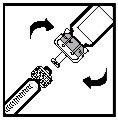
- Добавление растворителя
- Держа флакон в вертикальном положении на ровной поверхности, медленно надавите на поршень до тех пор, пока весь растворитель не войдет в флакон. Это поможет уменьшить образование пены (многие пузырьки) (см. Фигуру 8).
- После добавления растворителя к Энбрелю поршень может самопроизвольно переместиться. Это происходит из-за давления воздуха и не является поводом для беспокойства.
Фигура 8
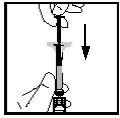
- С шприцем, все еще подключенным, медленно переместите флакон по кругу в течение нескольких минут, чтобы растворить порошок (см. Фигуру 9). НЕвстряхивайте флакон. Подождите, пока весь порошок не растворится (обычно менее 10 минут). Раствор должен быть прозрачным и бесцветным или иметь светло-желтый или светло-коричневый цвет, без комков, чешуек или частиц. Нормально, если остаются остатки белой пены в флаконе. НЕиспользуйте Энбрел, если весь порошок в флаконе не растворится в течение 10 минут. Начните заново с другой упаковкой дозы.
Фигура 9
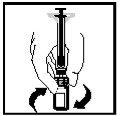
- Извлечение раствора Энбреля из флакона
- С шприцем, все еще подключенным к флакону и адаптеру, держите флакон вверх тормашками на уровне глаз. Полностью надавите на поршень внутрь шприца (см. Фигуру 10).
Фигура 10
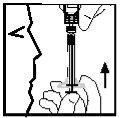
- Затем медленно вытяните поршень назад, чтобы извлечь жидкость в шприц (см. Фигуру 11). Для взрослых пациентов извлеките весь объем. Для детей извлеките только часть жидкости, которую врач ребенка указал вам. После извлечения Энбреля из флакона вы можете обнаружить некоторое количество воздуха в шприце. Не беспокойтесь, поскольку воздух будет удален на последней стадии.
Фигура 11
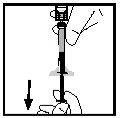
- Держите флакон вверх тормашками и отделите шприц от адаптера для флакона, повернув его против часовой стрелки (см. Фигуру 12).
Фигура 12
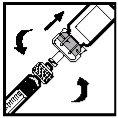
- Поместите наполненный шприц на ровную поверхность. Убедитесь, что конец не касается ничего. Будьте осторожны, чтобы не надавить на поршень вниз.
(Примечание: После выполнения этих шагов может остаться небольшое количество жидкости вфлаконе. Это нормально.)
- Установка иглы в шприц
- Игла находится в пластиковой упаковке, чтобы сохранить ее стерильность.
- Чтобы открыть пластиковую упаковку, держите короткую и широкую часть в одной руке. Поместите другую руку на длинную часть упаковки.
- Чтобы разломать упаковку, согните верхнюю часть вверх и вниз до тех пор, пока она не разломится (см. Фигуру 13).
Фигура 13
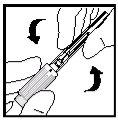
- После разлома упаковки снимите короткую и широкую часть пластиковой упаковки.
- Игла останется в длинной части упаковки.
- Держа иглу и упаковку в одной руке, возьмите шприц и вставьте его конец в отверстие иглы.
- Вставьте шприц в иглу, повернув его по часовой стрелке до полного закрепления (см. Фигуру 14).
Фигура 14
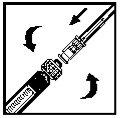
- Снимите защитный колпачок с иглы шприца, потянув его сильно, будучи осторожным, чтобы не трогать иглу и не допускать, чтобы она касалась любой поверхности (см. Фигуру 15). Будьте осторожны, чтобы не согнуть или не повредить колпачок при его снятии, чтобы не повредить иглу.
Фигура 15

- Держа шприц в вертикальном положении, удалите пузырьки, медленно надавив на поршень до тех пор, пока не извлечете воздух (см. Фигуру 16).
Фигура 16
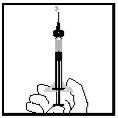
- Выбор места инъекции
- Три рекомендуемых места для инъекции Энбреля включают: (1) центральную переднюю часть бедер; (2)腹, за исключением области 5 см вокруг пупка; и (3) внешнюю верхнюю часть рук (см. Фигуру 17). Если вы делаете себе инъекцию, не должны делать это в внешней верхней части рук.
Фигура 17
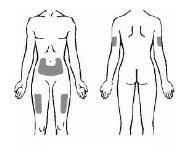
- Для каждой новой инъекции должно использоваться другое место. Каждая новая инъекция должна быть сделана не менее чем в 3 см от предыдущего места инъекции. НЕвводите в области чувствительной, поврежденной, покрасневшей или уплотненной кожи. Избегайте областей с рубцами или растяжками (может быть полезно, если вы запишете места предыдущих инъекций).
- Если вы или ребенок страдаете псориазом, следует попытаться не вводить непосредственно в любую область кожи, которая является приподнятой, толстой, красной или чешуйчатой ("псориатические поражения кожи").
- Подготовка места инъекции и введение раствора Энбреля
- Очистите место инъекции, где вы собираетесь ввести Энбрел, ватным шариком с алкоголем, используя круговое движение. НЕтрогайте эту область снова до тех пор, пока не будет введена инъекция.
- Когда предварительно очищенная кожа высохнет, возьмите ее и крепко удерживайте одной рукой. Другой рукой удерживайте шприц как карандаш.
- С быстрым и коротким движением, надавите на иглу до конца, проникая в кожу под углом 45° до 90° (см. Фигуру 18). С практикой вы найдете угол, который является наиболее комфортным для вас или ребенка. Будьте осторожны, чтобы не надавить на иглу слишком медленно или с большой силой.
Фигура 18
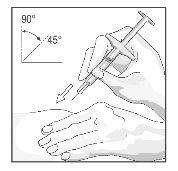
- Когда игла будет полностью введена в кожу, отпустите кожу, которую вы удерживаете. Другой рукой удерживайте иглу возле ее основания, чтобы стабилизировать ее. Затем надавите на поршень, чтобы ввести весь раствор с медленнойи постоянной скоростью (см. Фигуру 19).
Фигура 19
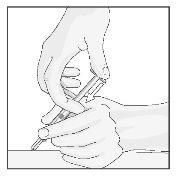
- Когда шприц будет пуст, выньте иглу из кожи; будьте осторожны, чтобы держать шприц под тем же углом, что и при введении.
- Нажмите на место инъекции ватным шариком в течение 10 секунд. Может произойти легкое кровотечение. НЕтрите место инъекции. Если желаете, можете наложить повязку или бинт.
- Утилизация материалов
- Шприц и иглы НИКОГДАне должны быть повторно использованы. Утилизируйте их, следуя инструкциям вашего врача, медсестры или фармацевта.
Если у вас есть какие-либо вопросы, проконсультируйтесь с врачом, медсестрой или фармацевтом, знакомыми с использованием Энбреля.
- Страна регистрации
- Активное вещество
- Требуется рецептДа
- Производитель
- Информация носит справочный характер и не является медицинской рекомендацией. Перед приемом любых препаратов проконсультируйтесь с врачом. Oladoctor не несет ответственности за медицинские решения, принятые на основе этого контента.
- Аналоги ЭНБРЕЛЬ 25 мг ПОРОШОК И РАСТВОРИТЕЛЬ ДЛЯ ПРИГОТОВЛЕНИЯ РАСТВОРА ДЛЯ ИНЪЕКЦИЙФорма выпуска: ИНЪЕКЦИОННЫЙ РАСТВОР, 25 мгАктивное вещество: ЭтанерцептПроизводитель: Samsung Bioepis Nl B.V.Требуется рецептФорма выпуска: ИНЪЕКЦИОННЫЙ, 50 мгАктивное вещество: ЭтанерцептПроизводитель: Samsung Bioepis Nl B.V.Требуется рецептФорма выпуска: ИНЪЕКЦИОННЫЙ РАСТВОР, 50 мгАктивное вещество: ЭтанерцептПроизводитель: Samsung Bioepis Nl B.V.Требуется рецепт
Аналоги ЭНБРЕЛЬ 25 мг ПОРОШОК И РАСТВОРИТЕЛЬ ДЛЯ ПРИГОТОВЛЕНИЯ РАСТВОРА ДЛЯ ИНЪЕКЦИЙ в других странах
Лучшие аналоги с тем же действующим веществом и терапевтическим эффектом.
Аналог ЭНБРЕЛЬ 25 мг ПОРОШОК И РАСТВОРИТЕЛЬ ДЛЯ ПРИГОТОВЛЕНИЯ РАСТВОРА ДЛЯ ИНЪЕКЦИЙ в Украина
Врачи онлайн по ЭНБРЕЛЬ 25 мг ПОРОШОК И РАСТВОРИТЕЛЬ ДЛЯ ПРИГОТОВЛЕНИЯ РАСТВОРА ДЛЯ ИНЪЕКЦИЙ
Консультация по дозировке, побочным эффектам, взаимодействиям, противопоказаниям и продлению рецепта на ЭНБРЕЛЬ 25 мг ПОРОШОК И РАСТВОРИТЕЛЬ ДЛЯ ПРИГОТОВЛЕНИЯ РАСТВОРА ДЛЯ ИНЪЕКЦИЙ – по решению врача и с учетом местных правил.



